Facilities
NLR's hydrogen and fuel cell research facilities provide state-of-the-art capabilities that industry can leverage across the technology development spectrum—from materials to systems—to de-risk activities and accelerate time to market.
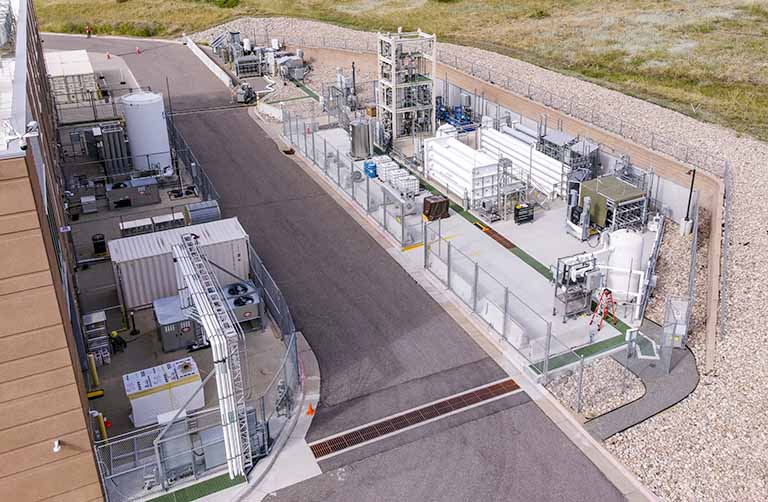
HITRF: Hydrogen Infrastructure Testing and Research Facility
The HITRF at the Energy System Integration Facility is NLR’s high-flow hydrogen fueling research platform to evaluate hydrogen components, fueling protocols, station configurations, and control strategies for heavy-duty transportation, stationary, and portable applications.
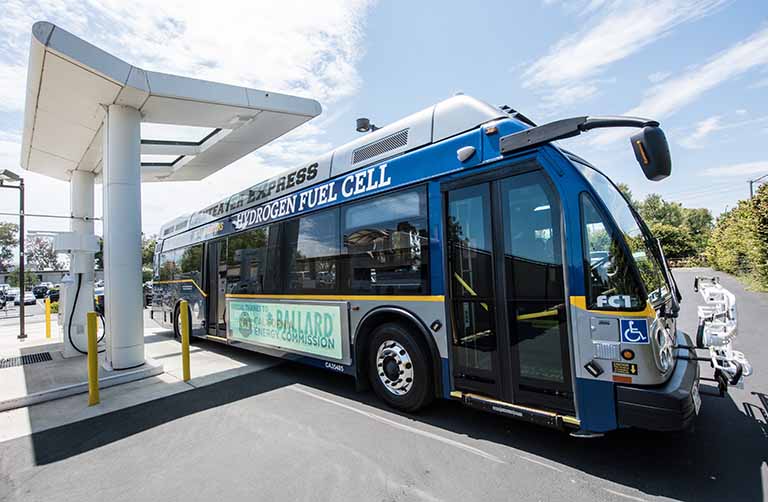
NFCTEC: National Fuel Cell Technology Evaluation Center
The NFCTEC is an off-network facility that provides secure management, storage, and processing of proprietary data from industry and plays a crucial role in NLR's independent, third-party analysis and validation of technologies in real-world operation.
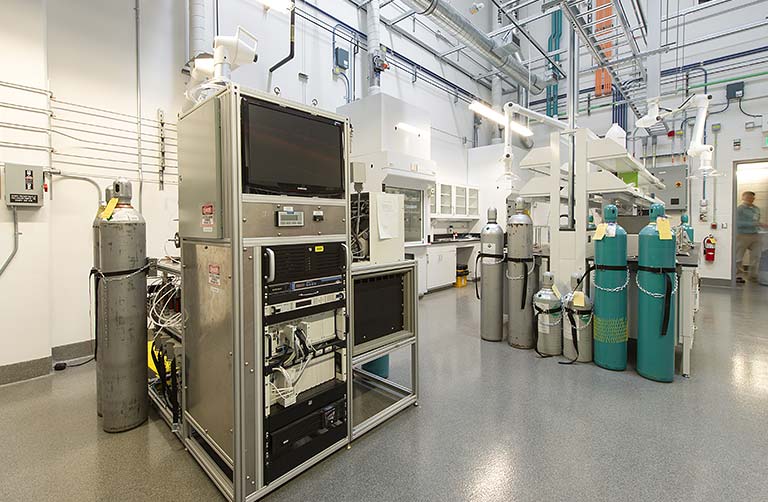
Safety Sensor Testing Laboratory
The Sensor Laboratory within the Energy System Integration Facility offers independent assessments of hydrogen sensors to sensor providers and end users to ensure that hydrogen sensor technology is available to meet end-user needs and to foster the proper use of sensors.

Energy Systems Integration Facility: Hydrogen and Fuels Systems
The Energy Systems Integration Facility includes multiple specialized laboratories for development, characterization, fabrication, manufacturing, and validation of hydrogen and fuel cell technology components and systems and grid integration and resilience research.
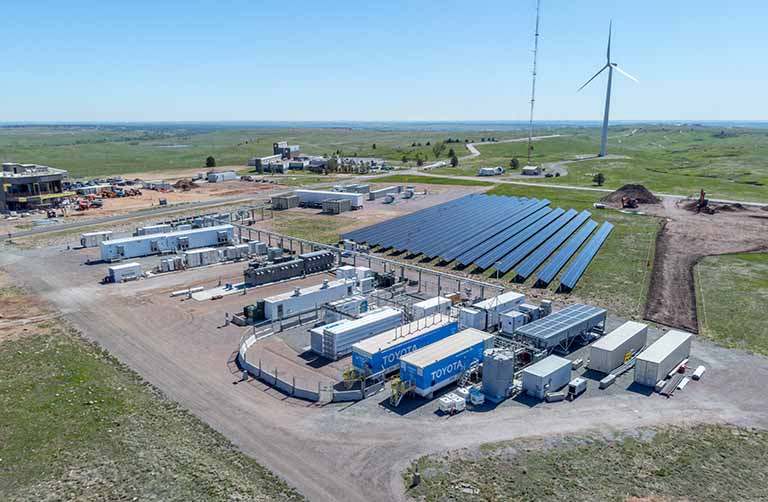
Megawatt-Scale Integrated Hydrogen Technologies System
Located at NLR's Flatirons Campus, the Integrated Hydrogen Technologies System has unique capabilities to conduct megawatt-scale research on hydrogen generation, energy storage, power production, and distribution—demonstrating how integrated hydrogen systems can increase grid resilience and connect the grid with industry to provide secure, reliable energy solutions.
Other Collaborative Facilities and Laboratories
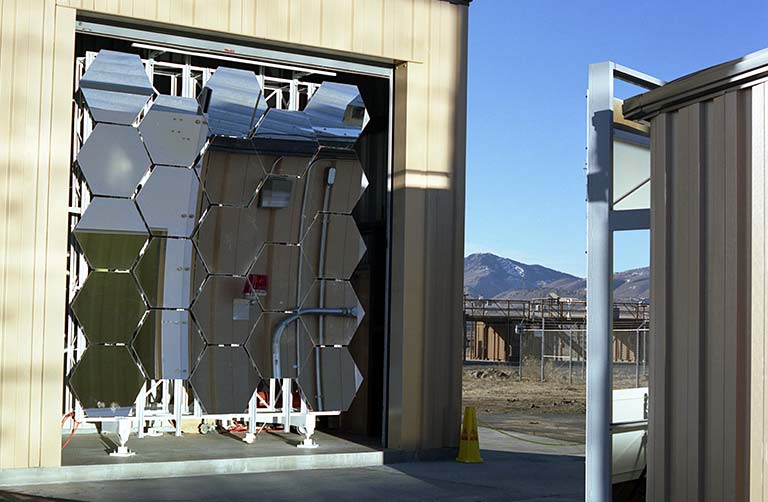
High-Flux Solar Furnace
The High-Flux Solar Furnace is designed for testing and evaluating high-temperature materials and solar-chemistry applications, including thermochemical hydrogen production, using concentrated sunlight.
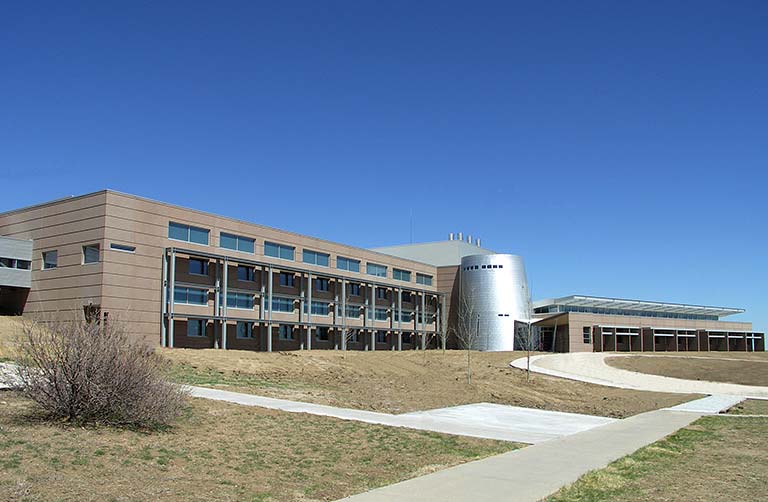
Science and Technology Facility
The Science and Technology Facility was designed specifically to reduce time delays associated with transferring technology to industry by providing advanced material synthesis, process science, and characterization capabilities for a wide range of scientific investigations.
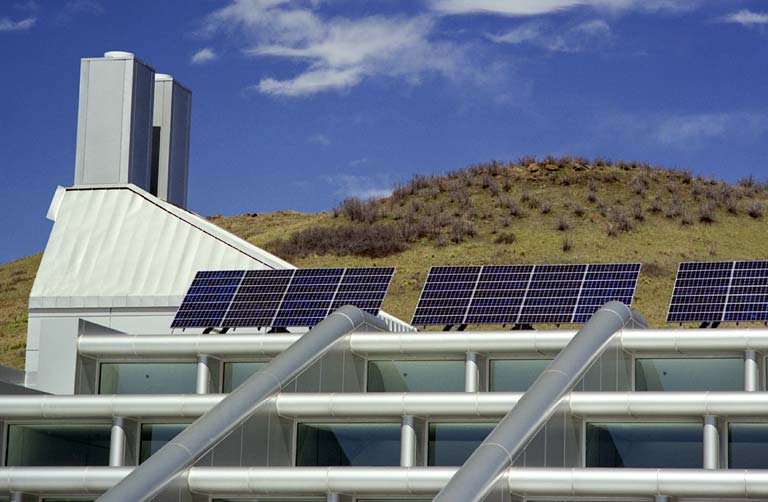
Solar Energy Research Facility
The Solar Energy Research Facility houses various laboratories used for photovoltaic and basic sciences activities such as developing semiconductor materials for high-efficiency solar cells, measuring and characterizing cell and module performance, and researching hydrogen generation and storage.
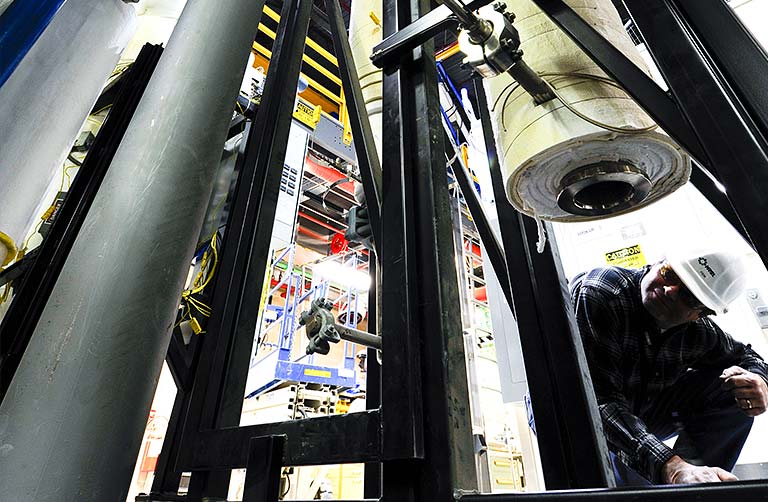
Thermal and Catalytic Process Development Unit
The Thermal and Catalytic Process Development Unit has state-of-the-art equipment for thermochemical process development and testing, ranging from catalyst and feedstock characterizations to bench-scale reactors to pilot plants.
Share
Last Updated Dec. 6, 2025
